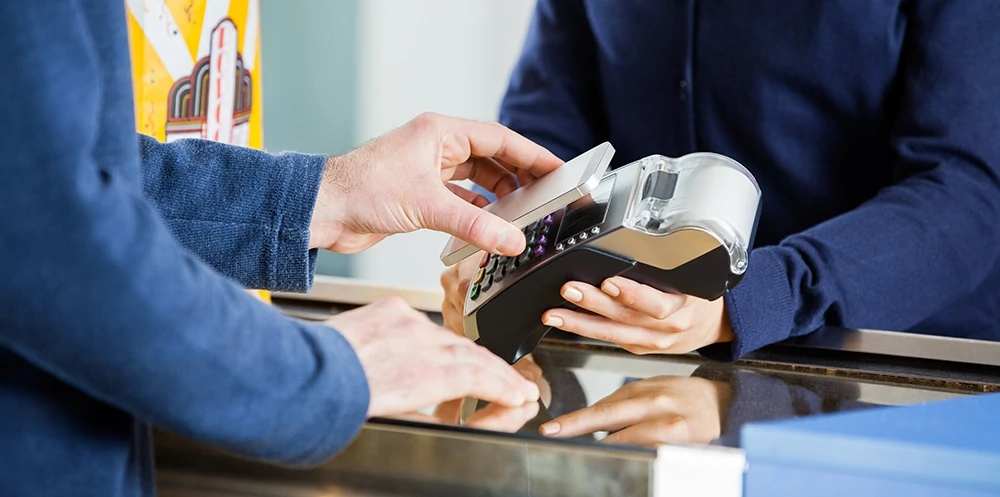China is fast becoming the world’s first cashless country and mobile payments have become even in the more remote corners of the country, writes Gabrielle Jaffe
Over a millennium ago, China became one of the first countries to develop a paper currency. It’s ironic then that it might become the first to go cashless.
Spend a day in Beijing or Shanghai and the extent to which digital payment has taken over becomes apparent. The youngest generation of Chinese consumers leave the house without cash, without even their wallets. Whether shopping online or buying in store, ordering takeaway or eating in restaurants, booking cinema tickets or checking out bikes from a cycle share scheme, all they need to pay is their phone. Even buskers these days accept mobile payment.
As late as 2010, digital transactions accounted for only 3.5 percent of retail consumption in China. By 2015, 17 percent of all transactions were digital. And it’s not just the volume of digital transactions that has grown exponentially; their value has jumped too. According to the most recent figures from the PCAC (Payment & Clearing Association of China), annual transactions through mobile phones alone hit just under $7.8 trillion in the third quarter of 2017. That’s nearly 70 times the size of America’s US$112 billion market.
So what accounts for this turn around? “As China transitions from a producer economy to a consumption-led model, overall spending has increased at the same time as we’ve seen a wave of technological innovation,” explains Mark Hedley, Director of Technology at CBBC.
When internet shopping first took off in China, there was no equivalent to PayPal and bankcards didn’t work online. At first, most e-commerce in China operated through cash on delivery. Even aeroplane tickets could be reserved online, then paid for with RMB bills once the courier arrived. Soon online companies stepped in to fill the market gap. E-commerce giant Alibaba was one of the first to launch an internet-based payment service, Alipay, in 2004.
Even buskers these days accept mobile payment
Fast forward a decade and the majority of Chinese people have internet access, thanks to cheap smartphones and 3G data packages. Alipay has its own mobile app with 450 million monthly active users and the average user in Beijing and Shanghai spends over RMB 100,000 (£11,500) annually through the app. Its main rival is not the banks but Tencent’s WeChat, a super app combining the functionality of Facebook, Whatsapp, Paypal and more, which boasts close to a billion users. Through a system of scannable barcode-like squares known as QR codes, both apps are now used for payments in bricks and mortar stores across China.
“The incredible growth of mobile payments is linked to the banking system being less mature in China. In the West, we’ve had credit cards since the 1980s. But in China, consumer credit has never been widely available,” says Hedley. “Tech companies innovated quicker than the banks were able to with contactless payment.”

A street-side snack vendor in Chengdu accepts mobile payments
Payment isn’t the only area where tech companies have leapfrogged the sluggish traditional banking system. Building on money in users’ Alipay wallets, Alibaba developed Yu’e Bao, a wealth management product which gives 6-7 percent annual interest. By 2016, Yu’e Bao had over RMB 810 billion in assets and served 152 million customers, making it one of the world’s largest money markets. Tencent launched a similar product, Licaitong, in January 2014, and within a year, had already reached RMB 100 billion and 10 million users. Both companies also created a range of lending services.
“The young generation in China are early adopters,” says Hedley. “There’s a willingness to experiment with financial services.” Given the widespread acceptance of digital payment, it wasn’t a huge leap to accept digitised currencies underpinned by blockchain technology. Unsurprisingly, cryptocurrencies took off. By 2016, nearly 90 percent of bitcoin trading took place in China. In 2017, 65 ICOs (Initial Coin Offerings, a way of crowdfunding based on cryptocurrencies) raised RMB 2.62 billion from over 100,000 investors.
In recent months however, worried about financial risk, the Chinese government has banned ICOs and called on local exchanges to stop trading cryptocurrencies. At the same time, the People’s Bank of China has stepped up oversight of mobile financial services. New regulations state that the payment platforms’ reserve funds must have a 50 percent ratio and limits will be set on individual transactions on the apps, ranging from RMB 500 to RMB 5,000, depending on the users’ credit rating.
Tech companies innovated quicker than the banks were able to
Does this spell the end for cash alternatives? Ruomeng Wang, Senior Analyst for Fintech at market research firm IHS Markit, says cryptocurrencies are seeing a significant fall in popularity. “They were primarily used for investment. With the government restrictions, people have lost confidence and are cashing out.” However, it’s a different story with Alipay and WeChat Pay. “Tighter regulations for mobile services are a positive. In the past, there were fraudulent activities on these platforms. Now they are more secure.
“Alipay and WeChat are more than just an investment or even just a cash alternative,” she explains. “They’ve become their own ecosystem combining social networking with commerce.” A big part of their success is that they have worked with other companies to create mini-apps within their own software. For example, using WeChat users can pre-order meals at restaurants and the app will let the kitchen know when the user is on their way so the food is ready on their arrival. They can share pictures and comments on the dish with friends, all without having to leave the app.
Hoping to capture more of the market within China, international brands like Burberry and Tommy Hilfiger are selling through their own mini-apps within WeChat. And, with an eye out for the increasing amount Chinese tourists are spending abroad, a number of UK retailers, such as Harrods, have begun to roll out AliPay.
It’s early days and regulatory restrictions mean that accepting Chinese mobile payments isn’t straightforward. CBBC member company Ksher Wickaas is one group providing solutions for foreign retailers like the Scottish Whiskey Experience, so they can accept WeChat payment through their website or through point of sale machines in store. “In Southeast Asia, merchants we’ve worked with have experienced increases in sales of circa 15 percent since using WeChat,” reports director Nick Corby. “If Chinese tourists can pay with WeChat, it allows them to reserve the cash they’ve exchanged. So they might purchase something they wouldn’t otherwise have bought. Also, they like WeChat because they see the exact cost being debited in RMB.”
“Although the majority of China’s wealthier consumers have cards that work internationally, accommodating Alipay or Wechat pay is a way of showing you are open to China,” says CBBC’s Mark Hedley. “Once you have consumers paying through these, you have a kind of stickiness and can continue connecting through social media once they return home.” So even if China doesn’t go cashless, being digital payment ready is key to doing business there.


